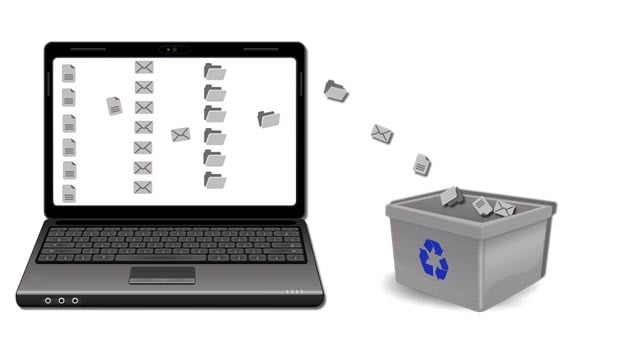
Sharing large files is as common as sipping morning coffee while checking emails. From high-resolution images to expansive data reports, the ability to send hefty files quickly and securely is a critical task for professionals across industries. Gone are the days of lengthy FTP uploads or couriering physical media – modern solutions are here to streamline the process. In this article, we'll explore how to send large files with ease, ensuring that your business keeps moving at the speed of thought.
Understanding File Size Limits Because Email Isn't Enough
Before diving into solutions, it's essential to recognize the limitations of traditional file-sharing methods. Email has been the backbone of business communication for decades. However, when it comes to sending large files, it often falls short. Most email services have file size limits that range from 10 to 25 megabytes – a fraction of what's required for high-definition videos or extensive databases.
But why do these limits exist? They're in place to ensure server stability and to prevent email systems from being overwhelmed with data. While splitting files into smaller chunks might seem like a workaround, it's a time-consuming process that also increases the risk of data corruption or loss. It's clear that businesses need to look beyond the confines of their inbox to send large files.
The Rise of Cloud Services
Cloud services have revolutionized the way we store and share data. Many free and paid platforms offer seamless solutions for sending large files. These technology services provide generous amounts of storage, often far surpassing the capacity of traditional email attachments, and they come with the added benefits of enhanced security, file management, and accessibility from any device with an internet connection.
Sharing a file is as easy as uploading it to the cloud and sending a link to the recipient, who can then download the file at their convenience. Additionally, these services often include tools for collaboration, allowing multiple users to edit and comment on documents in real time. With robust security measures in place, such as encryption and two-factor authentication, cloud services are not only convenient but also secure.
Compression Tools to Make Big Files Smaller
Another strategy for sending large files is to make them smaller. File compression tools can significantly reduce file sizes without sacrificing quality. These tools work by identifying and eliminating redundant data within a file, which can lead to substantial size reductions – especially with certain file types like text documents or uncompressed images.
However, compression isn't always a one-size-fits-all solution. Some file types, such as JPEG images or MP4 videos, are already compressed, and attempting to compress them further can yield negligible results or even larger file sizes due to added metadata. Additionally, the recipient must decompress the file before use, which adds an extra step to the process. Despite these caveats, compression remains a powerful tool when used appropriately and can be a bridge to using other file transfer methods effectively.
Dedicated File Transfer Services
For those instances where even cloud storage isn't enough, or when sending sensitive files with utmost security is a priority, dedicated file transfer services step in to fill the gap. Some services are designed specifically for sending large files. They often come with the ability to handle files up to several gigabytes in size, which is much larger than what standard email or even some cloud services can manage.
These platforms typically offer end-to-end encryption, ensuring that files are protected from the moment they leave your computer until they reach their intended recipient. Additionally, they often include features such as tracking, password protection, and self-destruct options, where files are automatically deleted from the server after a set period. This gives senders peace of mind, particularly when handling confidential or proprietary information.
FTP and SFTP Options
When it comes to sheer power and flexibility for sending large files, FTP (File Transfer Protocol) and its more secure variant, SFTP (Secure File Transfer Protocol), are the old-timers that continue to stand strong in the business world. These protocols are ideal for moving vast amounts of data and are a mainstay for web developers, architects, and video producers, among others who routinely work with large file sizes.
Setting up an FTP or SFTP transfer requires a bit more technical know-how than cloud services or dedicated file transfer tools. It involves setting up an FTP server, configuring network permissions, and using client software to manage uploads and downloads. Despite the learning curve, the benefits are significant. FTP and SFTP support simultaneous transfers of multiple files and directories, can resume interrupted downloads, and, in the case of SFTP, include robust security measures to protect data in transit.
